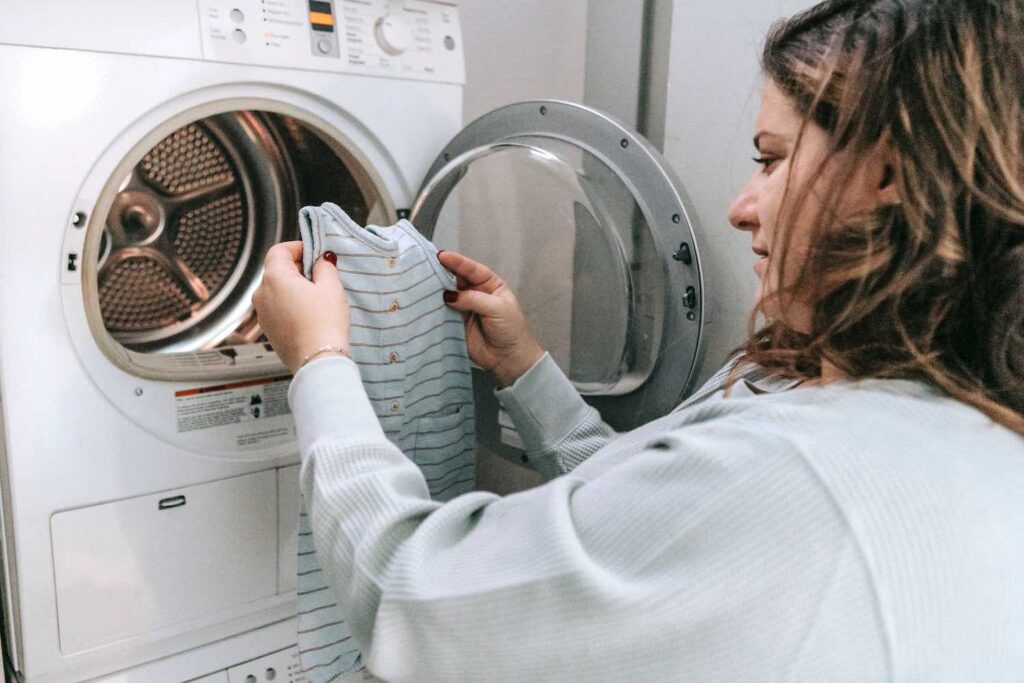Purchasing a clothes dryer for your family can be a daunting task, considering the multitude of brands, features, and specifications available in the market. This guide will help you navigate through the process, ensuring that you select the best clothes dryer for your family’s needs.
1. Types of Clothes Dryers
When it comes to the basics, there are two primary types of clothes dryers: electric and gas-powered. Understanding the differences between these two options is crucial in making an informed decision.
1.1 Electric Clothes Dryers
Electric dryers are the most common type found in homes. They are easy to install, requiring only a 240-volt outlet and a vent to the outside. Electric dryers are generally cheaper to purchase upfront but may have higher operating costs in the long run due to electricity prices.
1.2 Gas Clothes Dryers
Gas dryers are powered by natural gas or propane, which can be a more efficient and cost-effective option in the long run. Although gas models tend to be more expensive initially, you can usually recoup the difference in cost within the first year of use due to lower operating costs. Keep in mind that gas dryers require a gas line and proper ventilation, which may limit their installation options.
2. Capacity and Size
The capacity of a clothes dryer is measured in cubic feet and is an essential factor to consider based on your family’s laundry needs.
2.1 Small to Medium Capacity
If you have a small family or limited laundry needs, a dryer with a capacity of 3.5 to 5.5 cubic feet may be sufficient. These models are typically compact and can fit into tight spaces, making them ideal for apartments or small laundry rooms.
2.2 Large Capacity
For larger families or those with extensive laundry needs, a dryer with a capacity of 6.0 to 9.0 cubic feet is recommended. Large capacity models can handle bulkier items like bedding and heavy fabrics more efficiently, reducing the need for multiple drying cycles.
3. Energy Efficiency
Energy-efficient clothes dryers can help reduce your household’s energy consumption and save on utility bills. Look for models with the Energy Star certification, which indicates that the dryer meets or exceeds the government’s energy efficiency standards.
3.1 Ventless Dryers
Ventless dryers, also known as heat pump or condensation dryers, are a highly energy-efficient option. These models use a heat exchanger to remove moisture from the air and do not require a vent to the outside. As a result, ventless dryers can be installed in spaces where traditional vented models cannot.
4. Features and Functions
Modern clothes dryers offer various features and functions designed to make laundry tasks more efficient and convenient. Here are some noteworthy options to consider:
4.1 Moisture Sensors
Moisture sensors detect when your clothes are dry and automatically stop the cycle, preventing over-drying and saving energy. This feature is particularly useful for delicate fabrics that can be damaged by excessive heat.
4.2 Extended Tumbling
Extended tumbling allows the dryer to continue tumbling without heat for up to three hours after the cycle has ended. This feature can help reduce wrinkling and make ironing easier, especially for those who cannot immediately remove clothes from the dryer.
4.3 Steam Refresh
This function uses steam to refresh and remove wrinkles from clothes left in the dryer or those that have been stored for an extended period. Steam refresh is an excellent option for busy households that may not have time to iron every item.
4.4 Favorite Cycles
Many dryers allow you to save your most-used settings as a favorite cycle for quick and easy access. This feature is perfect for families with specific laundry routines or preferences.
4.5 Reverse Tumbling
Reverse tumbling changes the direction of the drum at specific points during the cycle, reducing tangling and improving drying efficiency. This feature is particularly beneficial for larger loads or items that tend to twist together, such as sheets and towels.
4.6 Safety Locks
Safety locks prevent children from accessing the dryer’s controls, ensuring that they cannot accidentally start a cycle or change settings.
4.7 Removable Drying Racks
Removable drying racks can be added to your dryer for items that should not be tumbled, such as sneakers or delicate fabrics. This option provides versatility and allows you to dry a wider range of items.
5. Controls and Interface
The controls and interface of your clothes dryer should be easy to use and accessible. Consider the following when evaluating a dryer’s controls:
5.1 Control Type
You will generally have a choice between mechanical and electronic controls. While electronic controls may offer more advanced features, they can also be more expensive to replace if an issue arises.
5.2 Control Location
Ensure that the controls are easily reachable and visible, especially if you are the primary user. Some models offer a lit console, which can be beneficial in dimly lit areas.
6. Noise Level
Consider the noise level of the clothes dryer, particularly if it will be installed near living or sleeping areas. Some models feature noise reduction technology or quieter operation, making them more suitable for noise-sensitive environments.
7. Price and Budget
Clothes dryers can vary significantly in price, so it’s essential to establish a budget before shopping. Keep in mind that higher-priced models may offer more advanced features, greater capacity, or better energy efficiency. However, a mid-range dryer with essential functions may be sufficient for many families.
8. Warranty and Customer Support
A clothes dryer is a significant investment, so it’s essential to choose a model from a reputable brand that offers a robust warranty and reliable customer support. Research customer reviews and ratings to get a better understanding of the product’s performance and durability.
9. Installation Requirements
Before purchasing a clothes dryer, consider the installation requirements and ensure that your laundry area can accommodate the necessary venting, electrical, or gas connections.
10. Appliance Servicing
Regular maintenance and servicing can help prolong the life of your clothes dryer and ensure optimal performance. Look for models that are easy to service and have readily available replacement parts.
In conclusion, selecting the perfect clothes dryer for your family requires careful consideration of several factors, including the type of dryer, capacity, energy efficiency, features, and budget. By keeping these aspects in mind, you can confidently choose a clothes dryer that best suits your family’s needs and makes laundry day a breeze.
What clothes dryer will suit your family? There are so many features that are attached to most clothes dryers these days that it can be difficult to know which one will suit your family the best.
To book in a service, visit our Appliance Servicing page.


